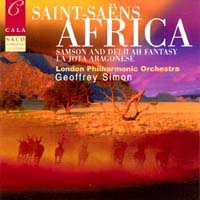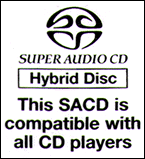 |
Africa
London Philharmonic Orchestra
Geoffrey Simon
Gwendolyn Mok - piano
Anthony Roden - tenor
Susan Milan - flute
Stephanie Chase - violin
James Campbell - clarinet
Robert Truman - cello
Tina Gruenberg - violin
During a career spanning three-quarters of a century, Saint-Saëns in his youth earned the admiration of Berlioz, yet he out-lived Debussy. Like so many of the world's great composers, Saint-Saëns took to music almost from the cradle.
 By the age of six he was writing songs and piano pieces and at ten he was playing Mozart and Beethoven piano concertos in public. His prowess on the organ led to an early appointment at the Church of the Madeleine, where he was to occupy the post of organist for nearly twenty
years. As a student he wrote four symphonies, two of which received performances, and in the 1860s he turned to the stage, although of his thirteen operas only Samson and Delilah has held a place in the repertoire.
By the age of six he was writing songs and piano pieces and at ten he was playing Mozart and Beethoven piano concertos in public. His prowess on the organ led to an early appointment at the Church of the Madeleine, where he was to occupy the post of organist for nearly twenty
years. As a student he wrote four symphonies, two of which received performances, and in the 1860s he turned to the stage, although of his thirteen operas only Samson and Delilah has held a place in the repertoire.Liszt's tone-poems inspired Saint-Saëns to produce a number of highly colourful orchestral works of his own - Danse macabre being the most popular - and his vast output included five piano concertos, in each of which he appeared as a highly successful soloist.
…
